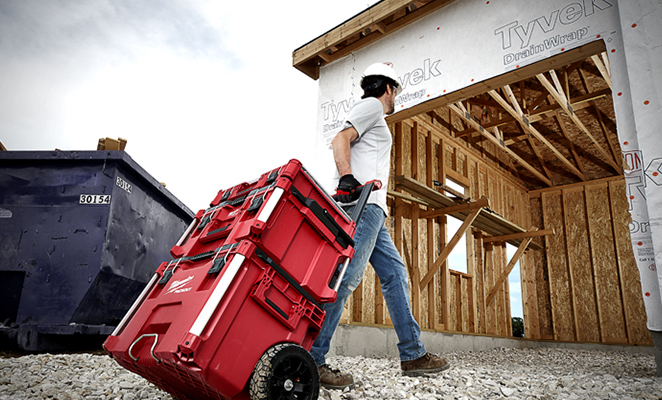According to data from the Bureau of Labor Statistics (BLS), some industries played a major role in stabilizing the economy. These industries include healthcare, construction, technology, and retail.
Without a doubt, the construction industry has contributed to economic growth in many ways. The BLS stated that occupations related to construction had been forecasted to grow by 4% between 2019 and 2029. This was partly due to the fact that population growth creates a constant demand for construction of residential and nonresidential buildings, roads, bridges, and other structures.
How the Pandemic Affected Major Industries
The pandemic led to lockdowns and market unpredictability that brought about a sharp rise in unemployment. Between March and May, about 36.5 million people filed for unemployment insurance, raising claims from about 200,000 per week to a height of 3.3 million in March.
A marked reduction in consumer spending affected the retail industry, while the hospitality industry recorded major stagnation because of the travel bans and interstate lockdowns.
The start of the pandemic saw construction projects annulled or held up. The subsequent permission of essential construction workers ensured that the industry stayed productive, but it did not eliminate the obstacles contractors are faced with. Workforces are increasingly unstable; their efficiency and accessibility are not certain and financial pools are being maxed out. Infrastructural projects are still held up because the government is to cover budget shortfalls.
However, the industry itself remains unfazed and resilient. It employs a populous workforce of off-site and on-site workers. Apart from the workers directly involved in construction, the projects employ other professionals such as secretaries, drivers, delivery men, accountants, and other related positions.
For this reason, the far-reaching industry continues to provide the paychecks of many workers even in the midst of the pandemic and a looming economic crisis.
How the Construction Industry Can Contribute to Economic Recovery

1. Contribution to National Development
The industry, like all the other major players, contributes its quota to the growth and development of the United States. Its contribution is indispensable; it provides necessary physical structures which are essential bases for the activities and advancement of other sectors.
The industry is known to contribute greatly to employment rates because most construction projects involve labor-intensive processes. This extends to as far as other sectors, serving to bring about income and employment in the transport, commerce, and manufacturing industries.
Construction projects necessitate the procurement of required raw materials from the manufacturing industry, such as bricks, timber, glass, aluminum, and steel.
The materials, equipment, and workforce for a project often require transportation to and from the site. This provides business for transport workers and commercial fleets.
2. Creation of More Employment Opportunities
A marked characteristic of a recovering economy is a reduction in unemployment rates. In the construction industry, a variety of job opportunities exist within and outside a project. These opportunities are further increased when a contractor embraces labor-intensive methods. This is usually the case with small to medium-sized contractors undertaking small to medium-sized projects. Larger contractors tend to embrace more technological approaches to construction.
Their labor-intensive approach aids job creation during projects, generating income for members of the community. Members of the community can be employed, such as plumbers, carpenters, roofers, site overseers, transport workers, or security personnel, amongst others.
3. Increase in Investment Potential
With a thriving industry and a large percentage of contractors vying for government and nongovernment projects, there is a marked interest in construction investments. An absence of competition causes a lethargy in delivery of projects, mismanagement of funds, and slow completion of projects, which discourage investors from seeking out the construction industry.
In the U.S. however, both large and smaller construction companies compete for projects. They guarantee the readiness of contractors to move to any location in the country where an expansion project is wanted and to deliver efficiently.
The availability of competent contractors influences the economy because it decreases the delay in execution and encourages quality of project.
4. Promotion of Technological Advancement and Related Careers
Most businesses in the world are embracing technology. This does not in any way discredit human labor as we know it, but then technology is available, so why not use it? In construction, for instance, human labor will always be in demand. After all, tech experts need to be hired to take charge of correspondence through mails and fax, prepare spreadsheets, create 3D visuals, and perform all the other logistics processes that would normally use up time and resources.
Some larger companies might already be toeing this technological line; however, once technology is viewed as a necessity and adopted into daily running of business, projects will take less time to be completed. In construction, there’s already the proliferation of solutions that address many of the industry’s productivity roadblocks and optimization gaps. There are software solutions that tackle back office work like accounting and mechanics lien filing, while the adoption of hardware tools like construction drones and trackers are enhancing both productivity and security on the jobsite.
Dependence on technology will reduce cost and maximize profit and ensure efficiency. The pros outweigh the cons, if any.
5. Development of Rural Communities
The socioeconomic growth of the members of a community depends on increased investment and infrastructural development. Construction projects undertaken by small contractors in rural communities provide the means for socioeconomic development in those areas.
Small construction companies are more willing to tackle small projects in rural areas and these projects often contribute to development by satisfying the basic infrastructural needs of small communities. The projects can influence healthcare, provide educational facilities, and improve transportation.
The small projects support small-scale businesses around the site and bring economic growth to the community in which the project is being carried out.
Possible Aftereffects of the Pandemic on the Construction Industry
With the resumption of more non-essential projects, there will be challenges due to the changes brought about by the pandemic. A reduction in available or willing workers may keep companies short-staffed for a while. The aftereffects of the pandemic may cause a disruption in supply chains as manufacturers may be hard-pressed for capital.
The industry would have to find ways to work around the social distancing regulations and project budget cuts. These obstacles are not insurmountable, of course. If anything, they present the industry with an opportunity to adapt rapidly and adjust to new methods.
Conclusion
Across the world, construction sites that had been put on hold due to the lockdown are beginning to reopen. There will be a likely expansion in construction during the post covid-19 world due to accumulated projects. The industry must find ways to meet accumulated demand.
One thing to expect after the pandemic is a spike in prefabrication trends within the industry. Construction processes will be increasingly carried out off site, and there will be an adoption of technological observation with drones.
Quite frankly, it will take some time for the industry to regain its footing and continue its business as usual. Crises that have occurred in the past may discourage private sector businesses from investing in an uncertain economic future. However, the government can begin or increase investments made in infrastructural projects to encourage economic recovery.
This is a guest post written by Patrick Hogan, CEO of Handle.





